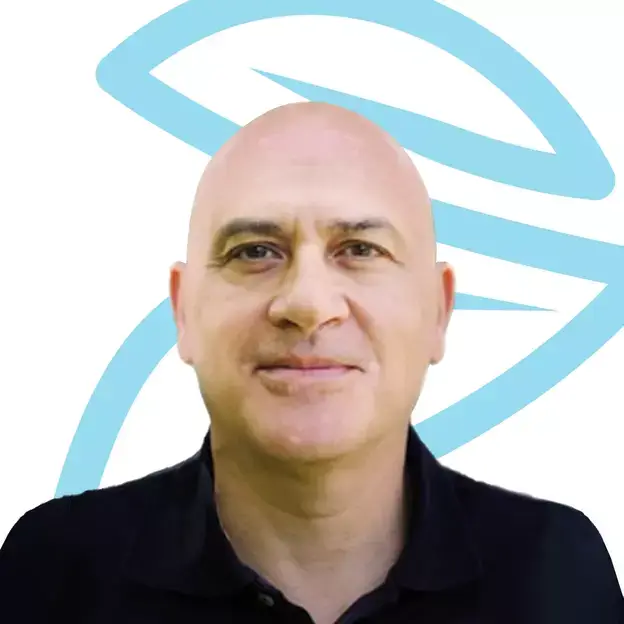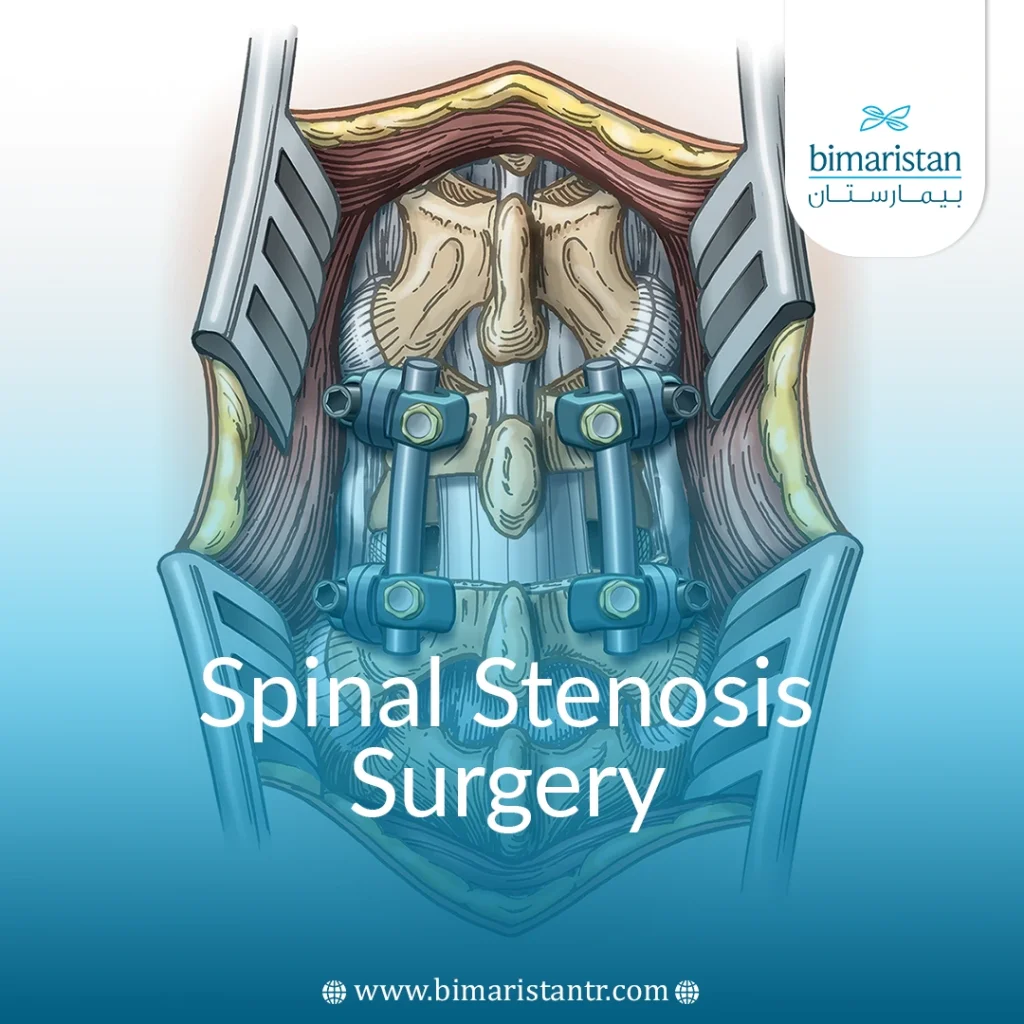Spinal stenosis surgery in Turkey is performed using an electron microscope to treat compression resulting from a bony disc protrusion on the spinal canal.
Spinal stenosis
Spinal stenosis is a common condition that occurs when the small spinal canal, which contains the nerve roots and spinal cord, compresses the spinal cord and/or nerve roots, causing pain, spasms, weakness, or numbness. Depending on where the stenosis occurs, you may feel these symptoms in your lower back, legs, neck, shoulder, or arms.
Stenosis is usually caused by osteoporosis, or arthritis of the spine and the discs between the vertebrae (backbones).
It may also be caused by the thickening of the ligaments in the back and the bulging of the discs that separate the vertebrae.
Symptoms of spinal stenosis often begin slowly and get worse over time.
The leg pain may become so severe that it becomes difficult to walk even short distances.
People often need to sit down to relieve the pain temporarily.
What is spinal stenosis?
Spinal stenosis is the narrowing of one or more areas of the spine.
This narrowing, which often occurs in the lower back or neck, can compress the spinal cord or the nerves that branch from the compressed areas.
A person with this condition typically complains of severe pain in the legs, calves, or lower back when standing or walking. The pain may come on more quickly when walking up or down a hill, slope, or stairs. The pain is usually relieved by sitting or bending over.
What causes spinal stenosis, and who does it affect?
Some people are born with a small spinal canal. This is called congenital stenosis.
However, spinal stenosis is often due to age-related changes that occur over time. This is called “acquired spinal stenosis.”
The risk of developing spinal stenosis increases in the following cases:
- In people born with a narrow spinal canal
- In females
- After the age of 50
- In those who have had a previous injury or surgery on the spine
Certain medical conditions can also cause spinal stenosis. These are:
- Osteoporosis and bone spurs (beaks) that form as we age.
- Rheumatoid spondylitis (for example, ankylosing spondylitis).
- Spinal tumors.
- Paget’s disease: It is a chronic disease of the elderly characterized by damage to bone tissue, especially in the spine, skull, or pelvis
How is spinal stenosis diagnosed in Turkey?
If spinal stenosis is suspected, your doctor will discuss your symptoms and medical history before conducting a physical examination. During the evaluation, they will look for symptoms related to spinal stenosis surgery, such as:
- Numbness, weakness, cramping, or pain in your legs, thighs, or feet that makes it difficult to walk.
- Pain radiating down the leg.
- Bowel and/or bladder dysfunction.
- Loss of sexual function.
In severe cases, partial or complete paralysis of the leg. This is a medical emergency, and you should get to the emergency room as soon as possible.
Your rheumatologist will also consider other conditions that can cause similar symptoms, such as arthritis in the hips or knees and disorders of the nervous system.
Or cardiovascular disorders. Your rheumatologist may also order other tests to confirm the diagnosis and determine the severity of your condition. These include:
- X-rays of the spine to check for osteoporosis, bone spurs (beaks), and spinal canal stenosis.
- CT SCAN, which takes more detailed images of the back and spinal canal.
- Magnetic resonance imaging (MRI SCAN) of the spine to capture images of the spinal cord and nerves.
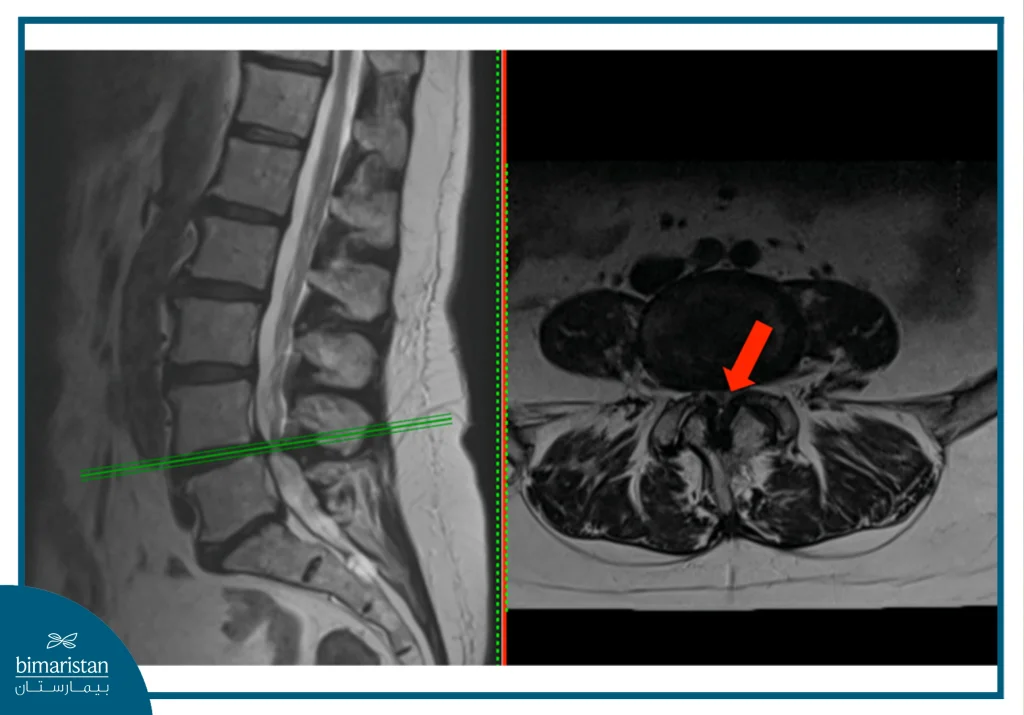
- An electromyogram (EMG) to examine the nerves going down to your legs.
- You may need hip or knee X-rays, blood tests, and tests to check the circulation in your legs and rule out other diseases with similar symptoms.
How is spinal stenosis treated in Turkey?
Although there is no definitive cure for spinal stenosis, regular exercises, medications, and surgery in some cases can provide relief.
Exercise:
Regular exercise can help you build and maintain strength in the muscles of your arms and upper legs (hip flexors and extensors, quadriceps, and hamstrings).
This will improve your balance, ability to walk, bend, and move, and pain control.
A physiotherapist can show you which exercises are right for you.
Medicines:
Over-the-counter medications such as acetaminophen (Tylenol) or nonsteroidal anti-inflammatory drugs (NSAIDs) such as ibuprofen (Advil, Motrin) or naproxen (Aleve, Anaprox) may also relieve pain.
In addition, your doctor may prescribe other medications to help with pain and/or muscle spasms.
Cortisone injections (corticosteroid injections):
Injections directly into the area around the spinal cord (known as epidural injections) may provide a great deal of temporary and occasional relief.
However, there is little objective data to support the use of cortisone injections for the treatment of spinal stenosis.
These injections are usually given on an outpatient basis in a hospital or clinic.
Spinal stenosis surgery in Turkey
Spinal decompression and spinal fusion
Is spinal stenosis surgery the right option for you?
Most patients with cervical or lumbar spinal stenosis respond well to nonsurgical treatments, so spinal stenosis surgery may not be necessary.
However, there are cases that may require moving forward with spine surgery:
- Failure to respond to non-surgical treatments.
- Severe pain for an extended period of time.
- Radiculopathy is a medical term used to describe pain, numbness, and tingling in the arms or legs.
- Loss of sensation in the arms or legs.
- Reduced motor strength in the arms or legs.
- Loss of bowel or bladder control (cauda equina syndrome, for example).
One of the main goals of spinal stenosis surgery in the neck or lower back is to free up the area of the spinal cord and/or nerve roots. This is called decompression.
Spine surgeons hope to minimize the pain caused by nerve inflammation by giving the spinal cord and nerve roots more room to pass through.
Another goal of spinal stenosis surgery is to increase motor strength in the arms or legs. If you’ve lost sensation in your arms or legs, your surgeon also hopes to restore it.
Types of spinal stenosis surgery
Surgeons typically use two surgical techniques for spinal stenosis surgery:
- Decompression: The surgeon removes tissue that compresses the nerve structure, creating more space in the spinal canal (for the spinal cord) or in the foramen (for nerve roots).
- Stabilization: The surgeon works to limit movement between the vertebrae.
Decompression surgery for spinal stenosis
To remove the tissue pressing on the nerve, your spine surgeon may perform one of the following types of surgery:
Intervertebral foraminotomy:
A foraminotomy can be performed if part of the disk or a bone spur (bone spur) is pressing on the nerve as it exits the vertebra (through an exit called a foramen). It means “opening a window”.
The foraminotomy makes the opening of the foramen larger, allowing the nerve to exit without being compressed.
Laminotomy:
A laminotomy creates a larger opening, this time in the lamina. Because the lamina may compress the nerve, the surgeon may provide more space for the nerves when performing a laminotomy.
Laminectomy
which is very similar to microscopic disc surgery: Sometimes, a laminotomy may not be enough.
Your surgeon may need to remove all or part of the lamina, a procedure called a laminectomy.
This can often be done at many levels without any adverse effects.
Indirect decompression is a form of decompression surgery in which the pressure is relieved by separating the bones from each other rather than removing the bones with artificial disks.
This can be done using devices that are placed between the vertebrae.
Artificial discs can also relieve pressure by restoring the height between neighboring vertebrae.
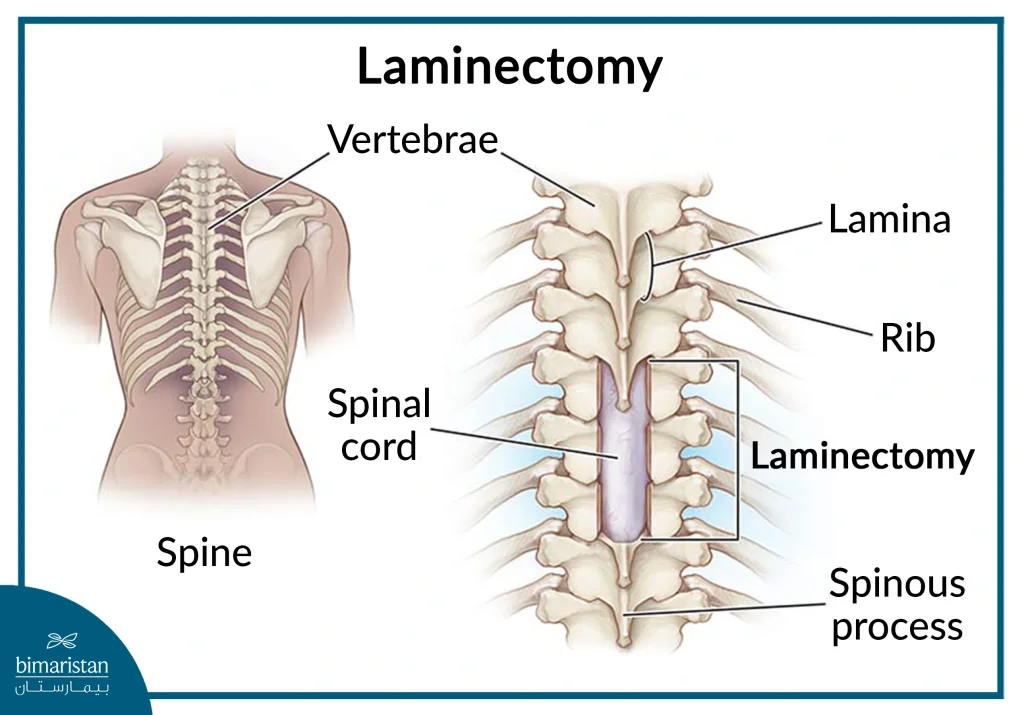
Stabilization surgery for spinal stenosis
Not everyone who undergoes spinal stenosis surgery needs stabilization, also known as spinal fusion.
It is beneficial in cases where one or more vertebrae have slipped out of the correct position, making the spine unstable (and painful).
In these cases, slipped bones can lead to pressure on the nerves.
The need for stabilization also depends on how many vertebrae the surgeon needs to work on.
For example, if the lamina needs to be removed (using a laminectomy) in multiple vertebrae, the spine may be unstable without these structures.
A spinal fusion procedure will be needed to help stabilize the spine.
Spinal stabilization surgery has been popular for many years.
It can be performed alone or at the same time as decompression surgery.
In spinal stabilization, the surgeon creates an environment in which the bones of your spine fuse together over time (usually over several months or more).
The surgeon uses a bone graft (usually using bones from your body) or a biological material (which stimulates bone growth).
The surgeon may use spinal instruments (wires, cables, screws, rods, and plates) to increase stability and help fuse the bones
. The fusion will stop movement between the vertebrae, providing long-term stability.
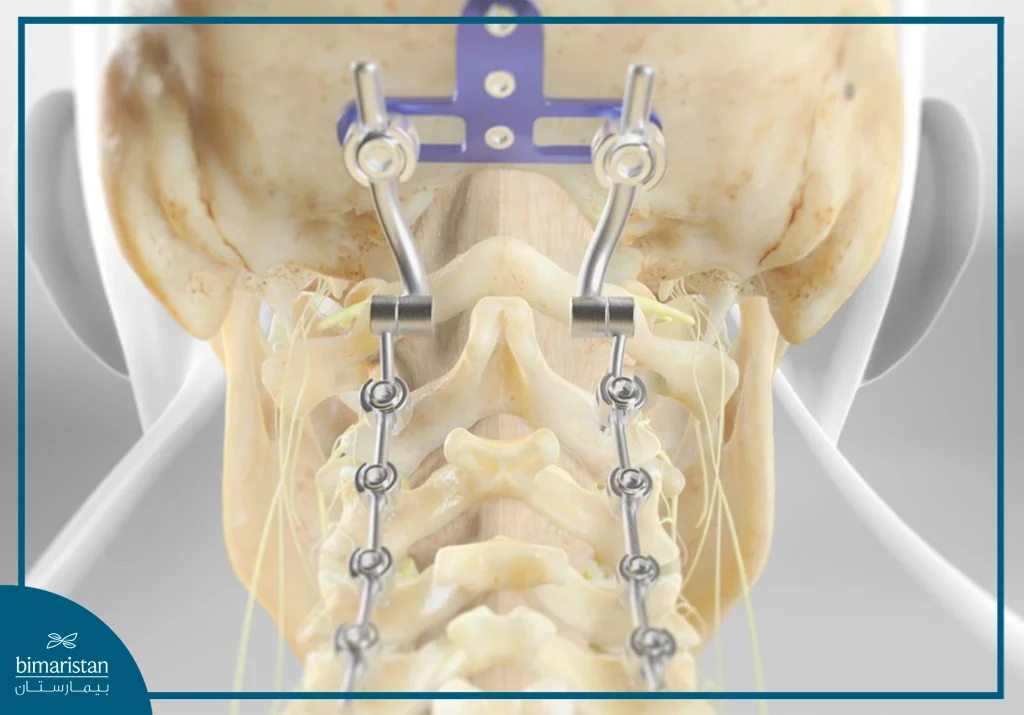
Open spine surgery or minimally invasive spine surgery?
Spinal stenosis surgery can be performed as open surgery involving a larger incision in the back or minimally invasive surgery using small incisions. Minimally invasive surgery often involves a microscope, endoscope, or tiny camera with specialized instruments. However, it may not be suitable for everyone. If multiple vertebrae need treatment, open surgery might be necessary.
Surgical risks of spinal stenosis surgery
As with any surgery, there are risks associated with spinal stenosis surgery. Your doctor will discuss the potential risks with you before asking you to sign a surgical consent form. Possible complications include but are not limited to
- General risks of anesthesia
- Harming the spinal cord or nerves
- Failure to heal bone fusion (pseudarthrosis)
- Failure to improve.
- Breakage/failure of instruments placed by the surgeon (screws, plates, rods, wires)
- Bone graft site infection and/or pain
Recovery from spinal stenosis surgery
After surgery, you won’t get better right away. You’ll likely be out of bed within 24 hours, and you’ll take pain medication for 2 to 4 weeks. After surgery, you’ll receive instructions on how to sit, stand, and stand carefully.
It’s important to give your body time to heal, so your doctor will likely recommend restricting your activities.
In general, don’t do anything that moves your spine too much.
You should avoid contact sports, twisting, or heavy lifting during your recovery period.
Be vigilant after surgery. Report any issues—such as fever, increased pain, or infection—to your doctor immediately.
You should always take care of your body and practice healthy habits, but being healthy after surgery is especially important. So you should:
- Follow your doctor’s treatment plan.
- Sit and stand properly.
- Learn to lift things properly.
- Exercise regularly (light exercise in particular is good, but check with your doctor first).
- Use the right sports equipment.
- Reaching and maintaining a healthy weight.
- Eat healthy foods (a balanced, low-fat diet rich in fruits and vegetables) and get enough calcium.
- Stop smoking.
- Avoid excessive use of alcoholic beverages.
The results of surgery to correct spinal stenosis are usually good. 80% to 90% of patients are pain-free after surgery.
Most studies show that the operation’s results are very good in severe cases, while physiotherapy is preferred in mild and moderate cases.
Sources:
